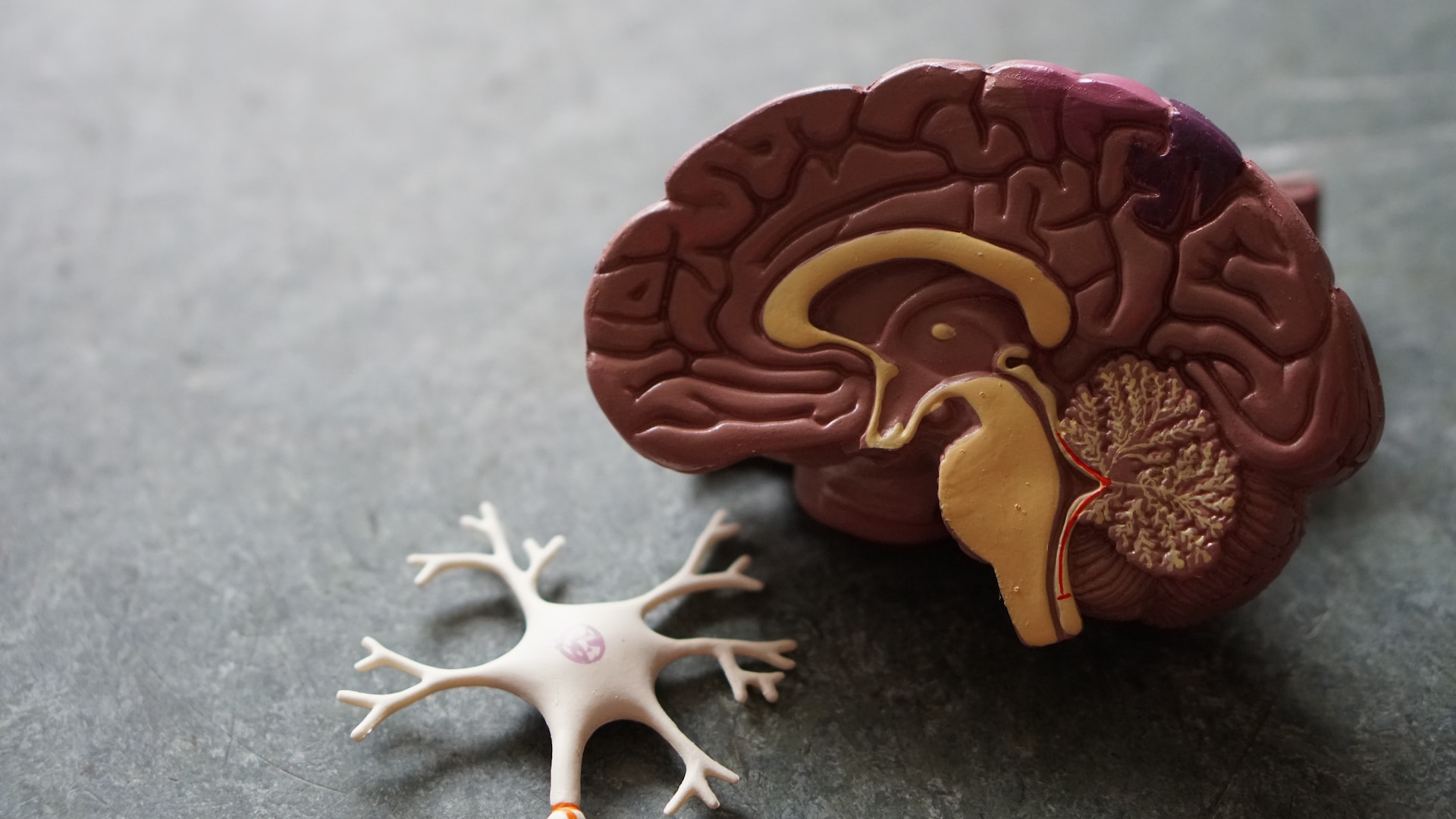Multiple Sclerosis – is a type of chronic disease that involves the central nervous system. It results in inflammation and demyelination. Demyelination is the process of damage and breakdown of the myelin sheath surrounding nerve cells. These changes result in impaired transmission of nerve impulses.
The damage that multiple sclerosis causes is multifocal, meaning it occurs throughout the body. The chronicity of the process leads to significant tissue atrophy of the central nervous system. This translates into visible neurological deficits, leading to various disabilities.
The first symptoms can appear as early as age 20. The pathogenesis of the disease is complex and needs to be better understood. There are different types of multiple sclerosis, which determine the course of the disease.

With the help of various tests, multiple sclerosis can be diagnosed, although atypical initial symptoms sometimes hamper the diagnostic process. Currently, only symptomatic treatment of multiple sclerosis is possible.
The course of a disease like multiple sclerosis can be unpredictable. It is a complex and multifactorial disorder. It has a phased course with periods of exacerbations and remissions, with varying degrees of symptoms. Therefore, multiple sclerosis is divided into four types. This categorization helps determine which course it follows. Types of multiple sclerosis include:
This form of multiple sclerosis occurs most often. The disease progresses with interspersed periods of relapsing symptoms and periods when symptoms are diminished or inactive. Relapses can occur with varying frequency – from several per year to one every many years. In the initial phase, symptoms may completely disappear. In contrast, symptoms are more substantial as the disease progresses and occur more frequently.
In the case of the secondary advanced form, casts become less frequent. In contrast, symptoms do not completely disappear during remission but only stabilize. Patients experience symptoms continuously. The severity of symptoms is constant and may become more severe over time. Very often, the RRMS type progresses to SPMS. Secondary progressive multiple sclerosis is characterized by a slow progression of the disease, in which the buildup of disability is independent of relapses.
A steady increase in neurological symptoms characterizes this type of disease. From the very beginning of the disease, symptoms are of increasing intensity. There are no sudden recurrences of severe symptoms that subside. Single periods of stability or remission are rare. This form of multiple sclerosis often occurs in people who become ill at a late age.
In progressive-relapsing multiple sclerosis type of disease, there are acute recurrences of symptoms. Multiple sclerosis progresses steadily. Symptoms gradually increase against a background of stable disease progression. Multiple sclerosis does not have the same clinical course in every patient. This type of multiple sclerosis is relatively rare.
At present, it is impossible to say what exactly contributes to the development of multiple sclerosis. Experts indicate that various factors may contribute to the development of the disease. MS is considered an immune-mediated chronic disease, the result of which is influenced by the following factors:
Among environmental factors, viral infections are most often mentioned. It is possible, for example, that the development of multiple sclerosis disease can occur due to Epstein-Barr virus![]() infection. This virus causes infectious mononucleosis, but many scientific reports highlight the relationship between EBV and multiple sclerosis.
infection. This virus causes infectious mononucleosis, but many scientific reports highlight the relationship between EBV and multiple sclerosis.
A variety of febrile illnesses can also cause multiple sclerosis. This is because high body temperature impairs conduction in demyelinated nerve fibers. Environmental factors also include stress, which can affect the immune system, and various types of trauma. Several studies indicate that smoking cigarettes![]() can significantly contribute to the development of multiple sclerosis.
can significantly contribute to the development of multiple sclerosis.
Internal factors, on the other hand, include vitamin D deficiency![]() . The research results over the past few decades suggest that maintaining adequate levels of active vitamin D in the serum can lower the risk of developing multiple sclerosis. Other research also indicates the influence of diet as a potential risk factor for developing the disease.
. The research results over the past few decades suggest that maintaining adequate levels of active vitamin D in the serum can lower the risk of developing multiple sclerosis. Other research also indicates the influence of diet as a potential risk factor for developing the disease.
Genetic considerations![]() , on the other hand, suggest that multiple sclerosis is an inherited disease. It has also been noted that multiple sclerosis is much more common in women. Therefore, female gender and a family history of the disease are factors that increase the risk of multiple sclerosis.
, on the other hand, suggest that multiple sclerosis is an inherited disease. It has also been noted that multiple sclerosis is much more common in women. Therefore, female gender and a family history of the disease are factors that increase the risk of multiple sclerosis.

Clinical symptoms of multiple sclerosis include neurological disorders. Initial, early symptoms can be nonspecific and difficult to recognize. Early multiple sclerosis may even be asymptomatic. Later symptoms are more characteristic, although they can also be nonspecific in some cases.
Multiple sclerosis becomes more characteristic as it develops. In the earlier stages of the disease, there are a small number of symptoms; over time, other symptoms become apparent. Although such symptoms can occur in many conditions, diagnosis can still be complicated. Some patients usually report problems with coordination of movement as their first symptom. General symptoms of multiple sclerosis include:
Visual symptoms that occur in multiple sclerosis are usually associated with extraocular optic neuritis. Optic nerve inflammation![]() is a severe disorder that causes sudden or gradual deterioration of visual acuity. It often precedes other symptoms of multiple sclerosis.
is a severe disorder that causes sudden or gradual deterioration of visual acuity. It often precedes other symptoms of multiple sclerosis.
The most common symptom is sensory abnormalities![]() and sensory sensations in the extremities. Surface sensory disturbances consist of altered senses of touch, temperature, or pain. Often patients complain of tingling, numbness, stinging, or a sensation resembling electric shock. Numbness and other sensory experiences can occur in one or more limbs, a part of a limb or trunk, the face, or several places.
and sensory sensations in the extremities. Surface sensory disturbances consist of altered senses of touch, temperature, or pain. Often patients complain of tingling, numbness, stinging, or a sensation resembling electric shock. Numbness and other sensory experiences can occur in one or more limbs, a part of a limb or trunk, the face, or several places.
Muscle tremors often occur. This limb weakness can affect balance problems![]() . For patients, moving around becomes difficult. They are at risk of falls and injuries as a result. At first, someone may be perceived as clumsy. However, if such situations persist, they may indicate the beginnings of multiple sclerosis.
. For patients, moving around becomes difficult. They are at risk of falls and injuries as a result. At first, someone may be perceived as clumsy. However, if such situations persist, they may indicate the beginnings of multiple sclerosis.
In addition, multiple sclerosis is characterized by complaints of pain. Pain is a common symptom; the most common are painful muscle spasms and headaches. In addition, there may be bladder dysfunction![]() – patients have all sorts of urinary problems. They may feel an urgent urge to urinate or incontinence. Also, constipation may occur.
– patients have all sorts of urinary problems. They may feel an urgent urge to urinate or incontinence. Also, constipation may occur.

Sometimes multiple sclerosis has nonspecific symptoms that make it challenging to diagnose correctly. The presence of these symptoms may suggest other diseases. Therefore, multiple sclerosis is often detected when the first focal neurological changes, such as numbness or visual disturbances, appear. Unusual symptoms of multiple sclerosis include:
The unpleasant occurrence of symptoms can contribute to chronic feelings of fatigue and weakness![]() . This nonspecific symptom occurs in almost all diseases, so it is difficult to recognize the actual ailment from it. In addition, there may be sexual dysfunction
. This nonspecific symptom occurs in almost all diseases, so it is difficult to recognize the actual ailment from it. In addition, there may be sexual dysfunction![]() , such as erectile problems in men.
, such as erectile problems in men.
Mood changes may also occur in the course of multiple sclerosis. Patients begin to suffer from depressive or even euphoric states. Sometimes they have violent fits of crying as well as laughter. There may also be cognitive impairment,![]() that is, problems with memory and concentration.
that is, problems with memory and concentration.
A proper diagnosis of multiple sclerosis requires tests to confirm the presence of the disease. At the beginning of the diagnosis, a medical history is used. Symptoms of concern to the patient are analyzed. It is also essential to consider comorbidities and o the presence of similar symptoms among family members. In addition to the history, tests are used, such as:
MRI examination – is a non-invasive test that provides cross-sectional images of the body. MRI examination is the best method to visualize the prevalence of neurological lesions. This test is also helpful in monitoring the course of the disease. However, it is essential to note that an MRI examination does not give a definite diagnosis in some cases.
Electrophysiological examination – is used to confirm that the inflammatory-demyelinating process is spreading multifocal. This type of examination analyzes various stimuli. In multiple sclerosis, primarily visual and motor stimuli are examined. With electrophysiological testing, any abnormalities related to stimulus perception are noted.
Cerebrospinal fluid (CSF) examination – The examination is performed to diagnose diseases or clinical conditions affecting the central nervous system. The doctor takes a sample of the CSF![]() through an injection at a point in the lower back. PMR tests are performed to determine the concentration of substances and cells present and to diagnose diseases involving the brain and spinal cord. This test is essential and has become an integral part of the diagnostic process for patients with multiple sclerosis.
through an injection at a point in the lower back. PMR tests are performed to determine the concentration of substances and cells present and to diagnose diseases involving the brain and spinal cord. This test is essential and has become an integral part of the diagnostic process for patients with multiple sclerosis.

Currently, there is no effective medicine that can completely cure multiple sclerosis. But therapeutic options have increased over the past few years. Various treatments are being used, which can be divided into the following categories:
Therapies vary widely in their effectiveness. Exacerbations of multiple sclerosis are usually treated with intravenous or oral corticosteroids![]() . They alleviate the symptoms associated with the disease and shorten the relapse duration.
. They alleviate the symptoms associated with the disease and shorten the relapse duration.
Disease-modifying therapy![]() , on the other hand, aims to slow the progression of the disease, reduce the frequency of symptom recurrence and limit the rate of increasing disability. Various substances used in this therapy can cause side effects. Therefore, treatment should be monitored and individually tailored to the patient's needs.
, on the other hand, aims to slow the progression of the disease, reduce the frequency of symptom recurrence and limit the rate of increasing disability. Various substances used in this therapy can cause side effects. Therefore, treatment should be monitored and individually tailored to the patient's needs.
On the other hand, symptomatic treatment![]() of multiple sclerosis involves reducing the severity of the discomfort that impedes the patient's daily functioning. It focuses on relieving various conditions – for example, reducing painful afflictions. Different treatment methods are used for this purpose, depending on the symptoms present.
of multiple sclerosis involves reducing the severity of the discomfort that impedes the patient's daily functioning. It focuses on relieving various conditions – for example, reducing painful afflictions. Different treatment methods are used for this purpose, depending on the symptoms present.
Since multiple sclerosis is related to mobility, rehabilitation![]() is also an appropriate treatment method in this case. In parallel with the ongoing therapy with medication and after its completion, it is worthwhile to introduce the right exercises and physiotherapy.
is also an appropriate treatment method in this case. In parallel with the ongoing therapy with medication and after its completion, it is worthwhile to introduce the right exercises and physiotherapy.
In diagnosing diseases, it is essential to remember that many conditions have similar symptoms. Therefore, the diagnostic process is often tricky and requires careful analysis. Sometimes the exclusion of other diseases is very simple, and occasionally specialized tests are necessary. In the case of multiple sclerosis, other conditions with similar symptoms are also suspected. These diseases include:
Lyme disease – neuroborreliosis can give similar symptoms. In the case of this disease, the lesions also involve the nervous system. Therefore, general neurological symptoms can be difficult to attribute to a specific condition. However, testing for bacterial infection will confirm the disease in the case of Lyme disease.
Lupus – Lupus, like multiple sclerosis, can sometimes cause demyelination within the central nervous system. Lupus is also an autoimmune disease. This disease leads to chronic inflammation in the patient. Symptoms are nonspecific and affect many areas of functioning. The erythema on the patient's face significantly facilitates diagnosis, While in the absence, some laboratory tests are performed.
Devic's disease – this disease is very often confused with multiple sclerosis, specifically, a very severe course of multiple sclerosis. In Devic's condition, there is intense inflammation in the spinal cord of the optic nerves. The disease has an acute path leading to severe and increasing disability. MRI scans are needed to differentiate between the disorders.
Cerebrovascular diseases – cerebrovascular diseases are a group of conditions in the course of which permanent or temporary brain damage occurs. Such a disease is, for example, a brain aneurysm. Vascular diseases of the brain can produce similar neurological symptoms. CT scans and cerebral angiography are often used to detect aneurysms and other diseases, but MRIs should also detect lesions.
Encephalitis – is an infection of the central nervous system. The causes of encephalitis can vary; for example, inflammation can be caused by a viral infection. There are paresis and seizures in this disease, which are also characteristic of multiple sclerosis. Therefore, the likelihood of encephalitis is considered when conducting tests such as MRIs and CSF examinations in addition to multiple sclerosis.
Multiple sclerosis is a chronic inflammatory disease of the brain and spinal cord. In its course, immune cells attack the nerve sheaths in the central nervous system to disrupt the standard transmission of nerve impulses.
It is a mysterious disease because its causes are unknown. It is assumed that various factors contribute to the development of multiple sclerosis. These include environmental factors such as smoking and diet—genetic and internal factors such as bacterial infection.
Early symptoms of the disease can be easily overlooked. General symptoms of multiple sclerosis include pain and mobility problems. There are muscle tremors and spasms. This disease can also have nonspecific symptoms. Such symptoms include depressive and euphoric states. Diagnosis of multiple sclerosis requires tests, such as an MRI.
Treatment consists mainly of treating symptoms and preventing the disease from progressing. Multiple sclerosis can have symptoms similar to symptom complexes of other conditions, so the diagnosis should include encephalitis or Lyme disease, among others.